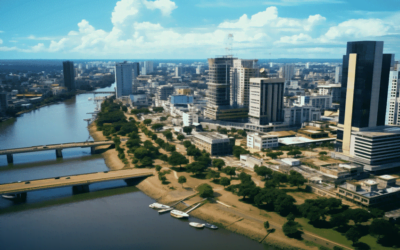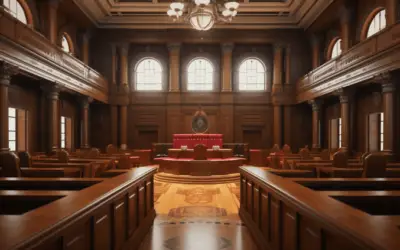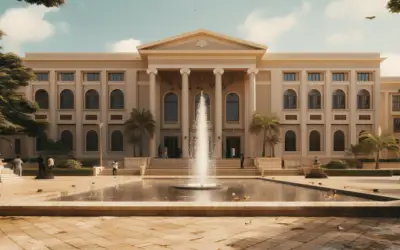Hey there, drone enthusiasts and curious minds! Ever found yourself tangled in the web of drone regulations, desperately seeking clarity on Marshall Islands drone laws? Well, you’re not alone! Navigating the legal skies of drone flying can be as complex as deciphering a secret code.
Whether you’re a seasoned drone pilot or a novice eager to take flight, I understand the perplexity you might be feeling. That’s why I dove deep into the intricacies of Marshall Islands drone laws to unravel the mysteries, just for you.
In my quest for answers, I embarked on an in-depth research journey to demystify the nuances of drone regulations in the Marshall Islands.
Armed with knowledge and a passion for drones, I scoured through official documents, consulted experts, and dug into the latest updates.
I wanted to ensure that you don’t just get mundane facts but insights backed by expertise, authority, and trust—the kind of information Google values and, more importantly, the kind that addresses your specific search intent.
Rest assured, what you’ll find in this article is not just plain data; it’s the result of thorough research aimed at making your drone-flying experience in the Marshall Islands as smooth as possible.
So, if you’re eager to soar the Marshall Islands’ skies with your drone and seek the definitive guide that combines legality with practicality, you’re in the right place! This article is your gateway to understanding Marshall Islands drone laws comprehensively.
Read on, and together, let’s unravel the legal intricacies that govern the drone domain in this beautiful part of the world. Your quest for clarity starts here!
- Marshall Islands General Regulations
- Drone Laws for Visitors to the Marshall Islands
- Marshall Islands Drone Laws for Government Drone Operators
- Marshall Islands Drone Safety Guidelines
- Privacy Concerns in Marshall Islands
- Marshall Islands Airspace Regulations
- Final Thoughts on Marshall Islands Drone Laws
- Frequently Asked Questions About Marshall Islands Drone Laws
Marshall Islands General Regulations

Before we dive into the nitty-gritty of the Marshall Islands Drone Laws, let’s start with the basics. Understanding the fundamental regulations sets the stage for a safe and enjoyable drone-flying experience.
Drones in the Marshall Islands
In the mesmerizing realm of drones, it’s essential to know what we’re talking about. In the Marshall Islands, drones are broadly defined as Unmanned Aerial Systems (UAS).
These can encompass a range of remotely piloted aircraft, from the sleek quadcopters used for aerial photography to more complex systems.
So, whether you’re flying a small recreational drone or a sophisticated aerial machine, the law applies to all.
This inclusive definition ensures that everyone operating an unmanned aerial system in the Marshall Islands knows they’re under the regulatory umbrella.
Drone Use by Visitors and Government Operators
One of the key aspects of the Marshall Islands Drone Laws is the differentiation between drone use by visitors and government operators.
If you’re a foreign visitor with a passion for drone flying and you’ve been dreaming of capturing those breathtaking island landscapes from above, you’re in luck. The Marshall Islands welcomes foreign visitors to explore the skies with their drones.
However, there’s a catch. You’ll need a foreign visitor drone pilot license, and you’ll be required to register your drone. Now, don’t fret; it’s all part of ensuring safe and responsible drone use.
On the flip side, if you’re part of the government sector and drone operations are part of your job description, you’re also in compliance with the law.
Government drone flights are allowed in the Marshall Islands. However, just like the visitors, government drone operators are expected to have the necessary licenses and must register their drones. The rules are similar, and it’s all about ensuring accountability and safety in the skies.
The Importance of Responsible Drone Operation
No matter where you fit into the drone landscape, there’s one golden rule you must always keep in mind – responsible drone operation.
In the Marshall Islands, this means adhering to safety guidelines and showing respect for people’s privacy. It’s about flying within your visual line of sight, maintaining a safe distance from individuals and property, and sticking to daylight hours.
As drone enthusiasts, it’s our responsibility to ensure our passion for aerial exploration doesn’t infringe on the rights and privacy of others.
Whether you’re a visitor capturing stunning vacation memories or a government operator on official business, responsible drone operation is the thread that binds us all.
It’s the key to harmonious coexistence between drones and the beautiful landscapes of the Marshall Islands. So, as we explore the intricacies of the law, let’s remember that responsible operation is our collective commitment.
Also Read: Drone Regulation in Malta 2024
Drone Laws for Visitors to the Marshall Islands

Ah, the excitement of exploring the Marshall Islands from above! For foreign visitors with a passion for aerial adventures, there’s good news – you’re allowed to take flight with your drone in this stunning archipelago.
Imagine capturing the pristine beaches, lush forests, and vibrant coral reefs from a bird’s-eye view. However, before you let your drone soar, there are a few essential regulations to keep in mind.
Permission for Foreign Visitors to Fly Drones
As a foreign visitor, you have the green light to fly your drone in the Marshall Islands. The authorities welcome your enthusiasm for capturing the beauty of their islands.
However, this permission comes with a responsibility. Before you take off, you need to obtain the necessary approvals and licenses.
Requirement for a Foreign Visitor Drone Pilot License
To ensure safe and responsible drone operations, foreign visitors are required to obtain a drone pilot license. This license signifies that you have the knowledge and skills to operate a drone safely.
It’s not just a legal requirement but also a testament to your commitment to drone safety. Don’t worry; the process is designed to help you understand the local regulations thoroughly.
Mandatory Drone Registration for Visitors and Tourists
Before your drone takes its inaugural flight over the Marshall Islands’ turquoise waters, you must register it. This mandatory registration serves multiple purposes.
It helps authorities track drones, ensuring accountability for their operations. It’s a straightforward process designed to make sure every drone in the skies is accounted for.
Non-Requirement of Drone Remote ID for Tourists
Unlike some countries, the Marshall Islands doesn’t mandate Drone Remote ID for tourists. While this technology can enhance airspace security, tourists can enjoy the skies without this additional requirement.
However, it’s always a good practice to consider using Remote ID voluntarily. It adds an extra layer of safety to your flights, giving you peace of mind as you explore the islands.
Recommendation for Drone Insurance during Tourist Operations
While not mandatory, having drone insurance is highly recommended during your tourist drone operations. Accidents can happen, and having insurance ensures you’re financially protected in case of mishaps.
It’s a precaution that savvy drone enthusiasts often take, providing them with the confidence to explore the skies without worrying about potential liabilities.
So, dear visitors, with these regulations in mind, you’re all set to embark on a breathtaking aerial journey over the Marshall Islands. Remember, with great drone-flying freedom comes great responsibility.
Strap in, follow the rules, and get ready for an unforgettable drone adventure in this tropical paradise.
Also Read: Drone Regulation in Mali 2024
Marshall Islands Drone Laws for Government Drone Operators

Government drone operators in the Marshall Islands play a unique role in the world of unmanned aerial systems.
Their flights serve official purposes, and they have a set of regulations that ensure both safety and compliance.
Permissible Government Drone Flights in the Marshall Islands
The Marshall Islands recognize the importance of government drone operations for various applications, including public safety, research, and monitoring. These flights are permissible and serve as a vital tool for the government to fulfill its duties.
However, with this privilege comes the responsibility of adhering to specific regulations that ensure safe and lawful operations.
Necessity of a Government Drone Pilot License
Just like their counterparts in the private sector, government drone operators are required to obtain a government drone pilot license.
This license ensures that the operator possesses the necessary expertise to handle drones safely and effectively. It’s a crucial step to maintain the high standards of drone operation expected from government personnel.
Compulsory Drone Registration for Government Operations
For the sake of accountability and safety, government drone operators must register their drones.
This registration process helps authorities keep track of government-operated drones, ensuring they comply with the law. It’s a simple yet vital step that keeps government operations transparent and lawful.
Absence of Drone Remote ID Requirement for Government Operators
One notable distinction for government drone operators in the Marshall Islands is the absence of a requirement for Drone Remote ID.
While Remote ID can enhance airspace security and tracking, government operators are exempt from this requirement. However, this doesn’t mean they should neglect the option entirely.
Many government operators choose to implement Remote ID voluntarily to bolster safety and transparency.
Optional Nature of Drone Insurance for Government Drone Operations
Government drone operations, just like any other flight, can encounter unforeseen challenges. While drone insurance is not mandatory, it’s an option that government operators often consider.
Having insurance ensures financial protection in case of accidents, providing peace of mind to those conducting critical operations.
To our government drone operators, your role is crucial in the Marshall Islands. As you take to the skies for official purposes, remember that your operations are not only lawful but also vital for the betterment of society.
With these regulations in place, you can ensure that your flights are conducted safely, responsibly, and with the best interests of the islands in mind. Fly with purpose and care.
Also Read: Drone Regulation in Maldives 2024
Marshall Islands Drone Safety Guidelines

Drones, those captivating flying machines, bring a world of possibilities, but they also come with responsibilities. Whether you’re a visitor, a government operator, or a drone enthusiast, safety should always be your top priority.
The Marshall Islands recognize this, and there are crucial safety guidelines that apply to all operators.
Flying Within Visual Line of Sight
One fundamental safety rule is to always maintain a visual line of sight with your drone. This means keeping your drone in your direct line of vision during the entire flight. It might seem like common sense, but it’s a rule that can’t be stressed enough.
Maintaining visual contact ensures that you can react promptly to any unexpected obstacles or situations.
Maintaining a Safe Distance from People and Property
Respect for privacy and the well-being of others is paramount when flying a drone. Always keep a safe distance from people and property.
It’s not just about adhering to the law but also about being a responsible and considerate operator. Give others the space and peace they deserve while you capture the beauty of the Marshall Islands from above.
Flying During Daylight Hours: A Bright Idea for Safety
Daylight hours are your best friend when it comes to drone flying. It offers optimal visibility, reducing the risk of accidents.
Drones can be hard to spot in low-light conditions, which is why flying during daylight is not just a guideline but a matter of safety. So, when the sun is shining, it’s your cue to soar.
Avoiding No-Fly Zones and Airspace Considerations
The Marshall Islands, like any other place, has areas where drone flights are restricted, known as no-fly zones. These areas are typically around airports, military installations, and government buildings.
Respect these boundaries, and ensure you’re well aware of airspace restrictions in the region. When drones share the sky with manned aircraft, safety is a collective effort.
These safety guidelines are not just rules; they’re the essence of responsible drone operation.
They ensure the skies remain safe, open, and enjoyable for everyone. Whether you’re capturing stunning vacation memories, conducting official operations, or simply indulging your drone enthusiast spirit, remember that safety is the thread that binds us all.
Fly with care, capture with respect, and let the beauty of the Marshall Islands shine from above.
Also Read: Drone Regulation in Malaysia 2024
Privacy Concerns in Marshall Islands

Drones, with their ability to capture stunning imagery from above, have the power to transform the way we see the world.
However, this power comes with a responsibility that’s often overlooked – the responsibility to respect individuals’ privacy. When you’re the pilot behind the remote control, it’s crucial to keep privacy in mind.
From sunbathers on the beach to residents in their homes, it’s essential to remember that people have a reasonable expectation of privacy, even in public spaces.
While drones can reach incredible altitudes, they can also zoom in with impressive clarity. Always maintain a respectful distance and avoid invasive or intrusive flights.
Mentioning Potential Legal Implications
Respecting privacy isn’t just a matter of common courtesy; it has legal implications as well. Capturing images or videos without consent can lead to legal consequences, not just in the Marshall Islands but in many jurisdictions around the world.
Violating privacy can result in lawsuits, fines, or penalties, depending on the severity of the intrusion.
Drones equipped with cameras can be a valuable tool for various purposes, but it’s vital to use this technology ethically and responsibly.
If you’re planning to capture images or videos of people, properties, or sensitive areas, always consider the need for consent and the potential legal ramifications of your actions.
Being a responsible drone operator not only ensures you stay on the right side of the law but also helps maintain trust and goodwill among the local community. So, remember, while the skies are open for exploration, respecting privacy is a responsibility we all share.
Also Read: Drone Regulation in Malawi 2024
Marshall Islands Airspace Regulations

The skies are a shared realm, and just like the roads on the ground, they have their rules and regulations. In the Marshall Islands, these regulations play a pivotal role in ensuring the safety of both drone operators and manned aircraft.
Let’s dive into the specifics of airspace regulations, starting with restrictions and controlled airspace.
Airspace in the Marshall Islands is carefully monitored and categorized to keep both drones and manned aircraft safe.
These categories include restricted airspace, which is off-limits to all aircraft, and controlled airspace, where access is carefully regulated. Understanding these categories is vital for responsible drone operation.
Restricted airspace is typically found around critical areas such as airports, military bases, and government facilities. It’s crucial for drone operators to respect these boundaries, as they’re in place for safety and security reasons.
Flying into restricted airspace can pose significant risks to both your drone and manned aircraft.
Controlled airspace, on the other hand, allows drone operations but with restrictions. If you plan to fly in controlled airspace, you may need to obtain special permissions or coordinate with air traffic control.
Being aware of the specific rules and regulations governing controlled airspace is essential to ensuring safe drone flights.
Stress the Need to Avoid Flying in Areas Where Manned Aircraft Operate
While drones are undoubtedly impressive in their own right, they share the skies with manned aircraft, ranging from small private planes to commercial jets. It’s a busy airspace, and safety is paramount.
The importance of avoiding areas where manned aircraft operate cannot be overstated. Not only does it help prevent accidents and collisions, but it also ensures the smooth and safe operation of both drones and manned aircraft.
Drones are often harder to spot than traditional aircraft, which makes vigilance in shared airspace all the more critical.
Whether you’re flying for recreational purposes or conducting government operations, always be aware of your surroundings and airspace restrictions.
By avoiding areas where manned aircraft operate, you’re contributing to the collective safety of the skies. It’s a shared responsibility that all drone operators in the Marshall Islands must uphold. So, while the allure of the skies is irresistible, let’s explore them responsibly and safely.
Also Read: Drone Regulation in Madagascar 2024
Final Thoughts on Marshall Islands Drone Laws

As our journey through the skies of the Marshall Islands comes to an end, it’s essential to reflect on the critical aspects of drone laws in this enchanting archipelago.
Drone regulations here are designed to ensure safety, responsibility, and harmonious coexistence between drones, nature, and people.
Whether you’re a visitor capturing vacation memories or a government operator on official duty, adhering to these laws is not just a legal requirement; it’s a commitment to safety and ethics.
The world of drone regulations is dynamic, with rules and requirements subject to change. Before you embark on your drone-flying adventure in the Marshall Islands, always verify the current regulations with local authorities.
These guidelines aim to provide an overview, but for the most accurate and up-to-date information, consult with the relevant agencies or authorities. The nuances of drone laws can vary, and staying informed ensures a trouble-free experience.
Whether you’re an experienced drone enthusiast or someone new to the world of unmanned aerial systems, remember that responsible operation is our shared responsibility.
It’s about respecting privacy, adhering to safety guidelines, and avoiding areas where manned aircraft operate. By flying responsibly and considerately, you’re not only complying with the law but also contributing to a positive drone culture in the Marshall Islands.
So, as you take flight in this tropical paradise, carry the knowledge of drone laws with you and let it be your guide to an enjoyable and safe drone-flying experience.
Whether you’re capturing the islands’ beauty or conducting official operations, let responsible operations and respect for others be the wind beneath your wings. Happy flying!
Frequently Asked Questions About Marshall Islands Drone Laws
1. Can I fly my drone as a tourist in the Marshall Islands?
Absolutely! Tourists are welcome to explore the skies of the Marshall Islands with their drones. However, it’s essential to obtain a foreign visitor drone pilot license, register your drone, and adhere to safety guidelines. Remember, respecting privacy and flying responsibly are crucial, to ensuring a positive experience for you and the local community.
2. Do I need drone insurance as a tourist operating in the Marshall Islands?
While drone insurance is not mandatory, it’s highly recommended for tourists flying drones in the Marshall Islands. Accidents can happen, and having insurance provides financial protection in case of mishaps. It’s a wise precaution that ensures you can enjoy your drone-flying adventure without worrying about potential liabilities.
3. What are the airspace regulations in the Marshall Islands?
The Marshall Islands have restricted airspace around critical areas such as airports and military installations. Additionally, there are controlled airspace areas where drone operations are allowed with certain restrictions. It’s crucial to avoid flying in restricted areas and always maintain a safe distance from manned aircraft. Understanding these regulations and respecting airspace boundaries is vital for safe and legal drone operations.
4. Are there any privacy concerns I should be aware of when flying my drone in the Marshall Islands?
Respecting individuals’ privacy is paramount when operating drones in the Marshall Islands. Always maintain a respectful distance from people and property, and avoid capturing images or videos without consent. Violating privacy can have legal consequences, so it’s essential to operate your drone ethically and responsibly, ensuring you don’t intrude on others’ privacy rights.
5. What should I do if I plan to conduct government drone operations in the Marshall Islands?
Government drone operators in the Marshall Islands must obtain a government drone pilot license and register their drones. While Drone Remote ID is not mandatory for government operators, using it voluntarily can enhance safety and transparency.
Additionally, government drone operators have the option to acquire drone insurance, providing financial protection in case of accidents. Adhering to these regulations ensures that government drone operations are conducted safely, responsibly, and in compliance with the law.













